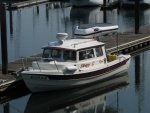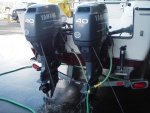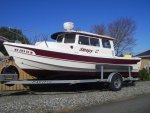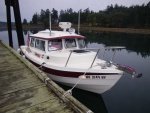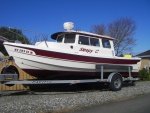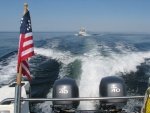thataway
Well-known member
- Joined
- Nov 2, 2003
- Messages
- 21,692
- Reaction score
- 63
- C Dory Year
- 2007
- C Dory Model
- 25 Cruiser
- Hull Identification Number
- DOR25652A707
- Vessel Name
- thataway
re-doing the entire bottom of a 32' C&C sailboat which was known for it's quality glass work, to the tune of $5000 for the osmosis repair, there is no way I would forego the little extra expense and effort to apply the barrier coat before painting. FWIW.
Jeff
When I was examining boats in Europe, I found the most expensive boats often had the worse osmosis. I saw one very high end sail boat go from a million dollars selling price to less than $100,000, after out of water survey... There was a hole all of the way thru the laminate. One of the issues, there is that some of the best boats are laminated in Scandinavia. Then they go to the warm waters of the Med. Great combination for osmosis, There is another issue, which is rarely mentioned, and this is "floppy hull syndrome" Basically this is where osmotic water/chemicals, have migrated up the mat fibers, and then hydrolysis occurs, and eventually the stiffness of the hull is compromised. Another facet of this is a poor glass to resin ratio. I have never seen this in C Dorys. I have seen it in a number of older small sailboats (and I include some 40 footers in this category). A well built fiberglass boat can last a long time. The CG made two fiberglass river patrol boats in about 1942, and used them for 20 years. The boats were taken out of service, and panel sections were cut out, and compared with the deflection, crush, etc as panels which were laid up and tested at the time of initial layup. There was little change. I owned a fiberglass production 10' boat built in 1941--probably the first fiberglass production run boat built--and I "restored it in 1981--used it daily for 5 years. That same dinghy was seen in 2015--over 70 years after it was built, and still in good condition. But it was stored "dry", even though exposed to the "elements" it never sat in the water full time, nor did water accumulate in it. Incidentally, it was not gel coated, but painted.

